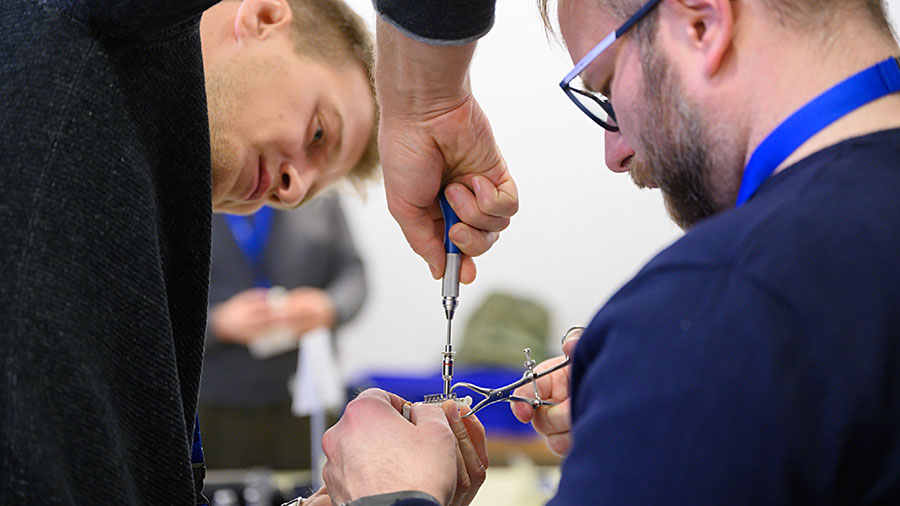AO VET Masters Course—Toy Breed Orthopedics: Traumatology and Joint Disease

This three-day course provides participants with the opportunity to develop and refine their knowledge, skills, and decision making in the management of traumatology and joint disease in toy breed dogs (weight less than 10 kg).
This course is suitable for Veterinary surgeons who have already attended the AO VET Principles of Small Animal Fractures course and who have experience or interest in managing common and challenging orthopedic problems in toy breed dogs.
Top national, regional, and international faculty
3-day program
For surgeons who have already attended the AO Vet Principles of Small Animal Fractures course
Network with colleagues from all over the world
CME credits
Course content
-
Learning objectives
By the end of this course, participants will be able to:
- Recognize the special conditions, biology, and biomechanics in toy breed dogs
- Select and apply appropriate diagnostic assessment tools to reach a diagnosis
- Interpret the available clinical information to make appropriate treatment decisions
- Plan and perform appropriate treatments, including selecting appropriate implants
- Manage postoperative care and monitoring
- Critically evaluate patient outcomes and own performance
-
Course modules
- Module 1— Antebrachial fractures
- Module 2— Common toy breed fractures
- Module 3— Limb deformity
- Module 4— Hip
- Module 5— Patellar luxation
- Module 6— Other joint problems
-
Featured lectures
- Biomechanical considerations in antebrachial fractures, including implants
- Biology considerations
- Hip replacement vs excision arthroplasty
- Managing hip luxation in toy breeds
- Trochleoplasty techniques
- Tibial tuberosity transpositions
- Soft tissues
- Current evidence in managing cruciate disease in toy breed dogs
- Considerations in steep tibial plateaus
- Inflammatory joint disease
- Carpal instability
-
Practical exercises
- Faculty moderated templating in groups with acetate and bone models, including discussion with peer groups
- Antebrachial fracture fixation
- Transverse distal radius fracture
- Short oblique distal radius fracture
- Proximal tibial physeal fracture
- TPLO plates / proximal metaphyseal curvilinear tibial fractures
- Distal femur physeal fracture, cross pin exercise
- Planning a PES varus treatment
- Corrective osteotomy for a PES varus
- Capital physeal fracture fixation with pins
- Caudal ilial fracture model
-
Small-group discussions
- Transverse distal radius fracture
- Short oblique distal radius fracture
- Comminuted fracture
- Humeral intracondylar fissue (HIF)
- Distal femoral fracture
- Proximal tibial physeal fracture
- Short ulna incongruity
- Chondrodystrophic
- Short radius
- Avascular necrosis
- Caudoventral hip luxation
- Capital physeal fracture
- MPL
- Complex MPL
- Cruciate MPL
- Shoulder luxation
- IMPA
- Carpal instability
-
Plenary case discussions
- Complications and how to avoid these - Periimplant antebrachial fracture and Delayed union (revision solution)
- Cruciate with MPL - TPLO MPL correction, Lateral suture and transposition, CCWO
Course details may be subject to change. Please check your chosen date and location for the detailed program.
